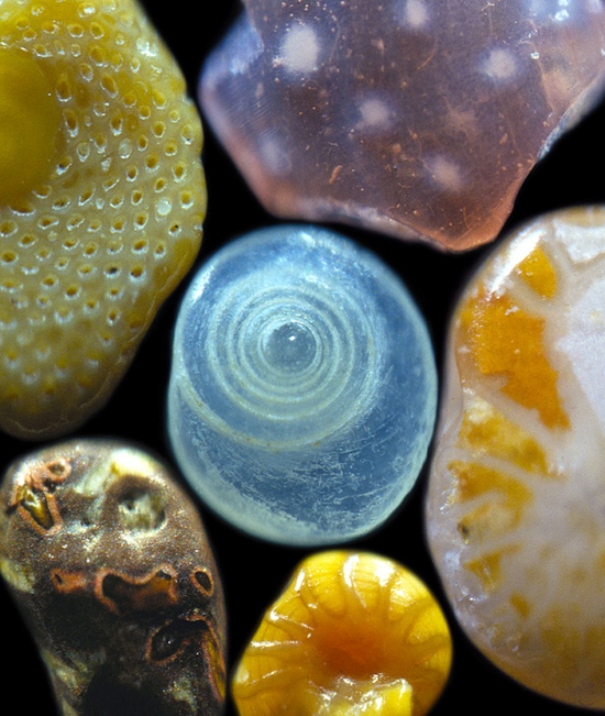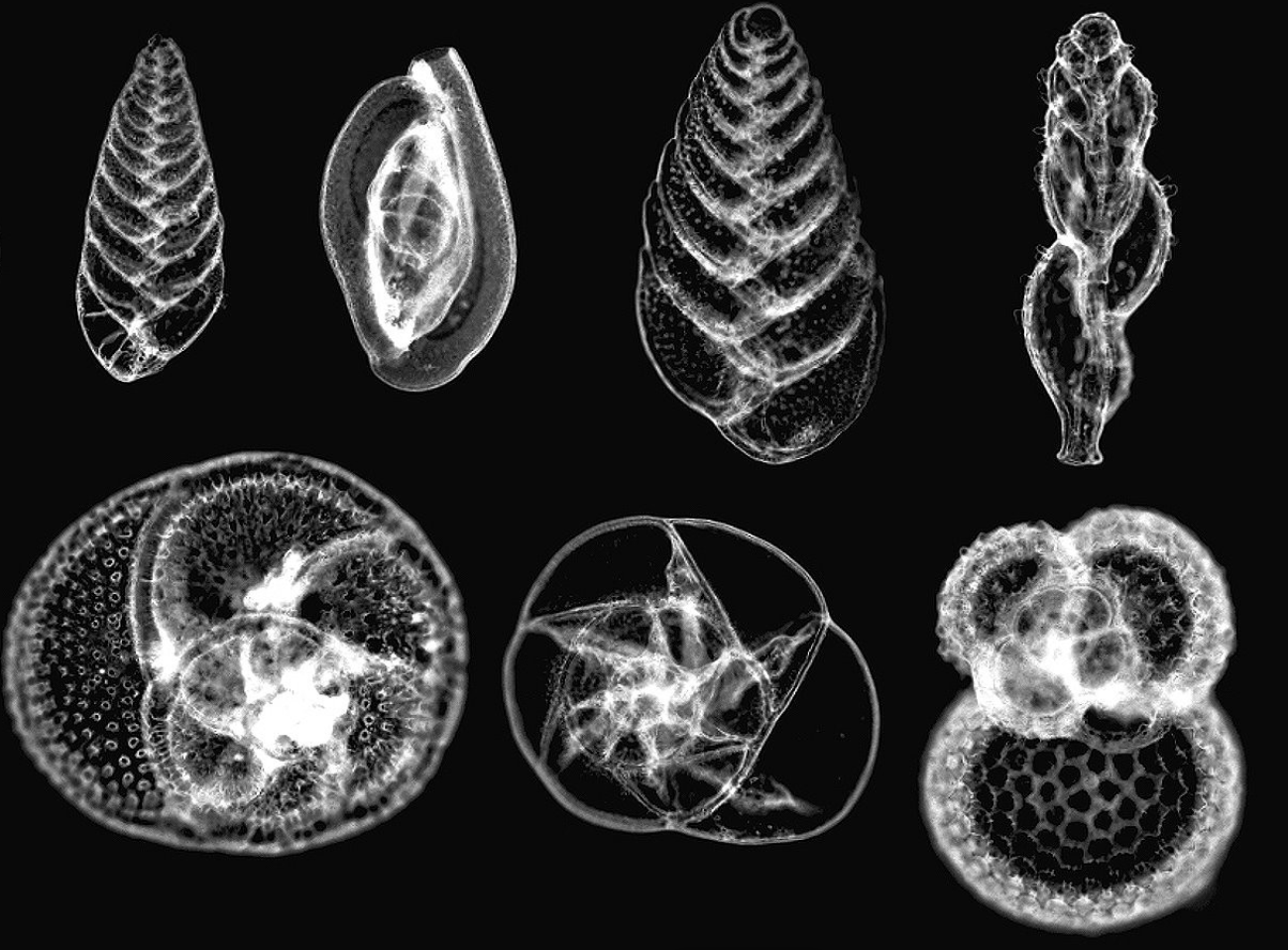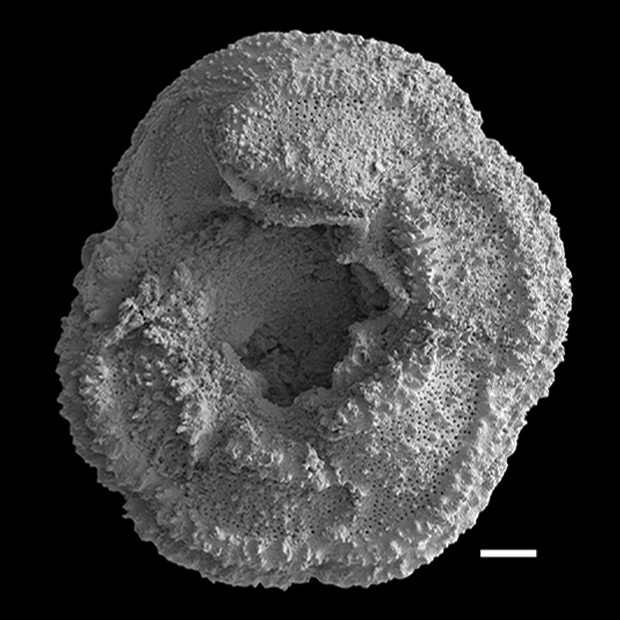Photomicrograph of shell structures. The mechanism that controls the creation of shells is still a mystery. Pali Nalu / Flickr
Princeton grad Prof. Sigal Abramovich has a mission. She wants to convince global regulators to include regular monitoring of the geochemistry of a certain type of teeny tiny shell of marine organisms (called forams) as an indicator of pollution in the ocean. She is in Israel studying the effects of desalination pollution, like heavy metals on the marine environment. And quantifying it from shells a the seashore near where effluent is produced.
The tiny shells, as small as a grain of sand, reveal more than jewel-like characteristics under a microscope.
Looking at the tiny shells or foraminifera, “We have been able to quantify the amounts of heavy metals pollution injected by the brine discharge from desalination plants across the Mediterranean coast of Israel,” explains Prof. Abramovich.
“Our research demonstrates the potential of using heavy metals anomalies in foraminiferal shells as a tool for detecting the industrial footprint of coastal facilities including areas that were considered clean nature reserves.”
What are forams?
Foraminifera (forams for short) are single-celled organisms (protists) with shells or tests (a technical term for internal shells). They are abundant as fossils for the last 540 million years.
In a series of studies over the past three years, Abramovich and her team from Ben Gurion University, The Israel Oceanographic and Limnological Research Institute and the Geological Survey of Israel have found that foraminifera found on the ocean floor store evidence of the pollution around them within their shell formation.
Coastal infrastructure makes the marine ecosystem susceptible to incidental industrial metal introduction that, even if relatively short-term, could stress local ecosystems or affect the water quality. Traditional monitoring methods are insensitive to these events, and thus better and more comprehensive monitoring methods are required.

Sigal Abramovich
Foraminifera are unicellular organisms that produce calcite shells directly from seawater. They are among the most ancient and abundant fossils and their calcite shells accumulate in mass quantities in oceanic sediments and thus become one of the most important components of sedimentary (carbonate) rocks.
They are also really pretty. This whole article here shows how pretty forams can be.

Their shells record the chemical and physical properties of their seawater, providing the basis for most climate research. This is the reason why foraminifera are considered one of the most important archives of ancient and modern oceans.
Foraminifera build their shells by sequential addition of chambers and each shell thus represents a natural monitoring sequence recording heavy metals in the ambient seawater over months. This chronological documentation of heavy metals in the seawater allows the recognition and quantification of short-term pollution events, and, since foraminifera are abundant, small and their shells are preserved after death, the monitoring can be carried out retroactively and at high spatial resolution.
She is working with an international network of oceanographers to encourage countries around the world to adopt regular foraminifera monitoring based on the methods developed in her lab.
Her research has been supported by the Israeli Ministry of Science through the BMBF-MOST program, by a GIF (German-Israeli Foundation for Scientific Research and Development) grant and the Israel Science Foundation.
Like rings on a tree, telling pollution story
An environmental record from the sea
As the animal grows, its home—the protective shell that surrounds it—must get bigger, and so they grow their shells layer upon layer, creating ‘growth-bands’, or growth increments, within the shell, according to Science. Some of these growth increments are visible on the external surface of the shell, while others are only visible in the internal structure.
But the interesting thing about the growth increments is that their width, or thickness, is affected by environmental conditions, like temperature. Some growth increments are a reflection of tidal cycles, some show annual periodicity. So the series of growth increments within a shell are essentially a record of the animal’s lifetime and, similar to the study of tree-rings, some scientists study them to make interpretations about the environment where that animal lived and grew.
The chemical characteristics are significant too—other metals, like magnesium (Mg2+) or strontium (Sr2+) can substitute for the calcium in the calcium carbonate, and this often depends on environmental conditions like temperature or salinity. Heavy metals incorporated into the shell can provide a record of environmental contamination or pollution.




